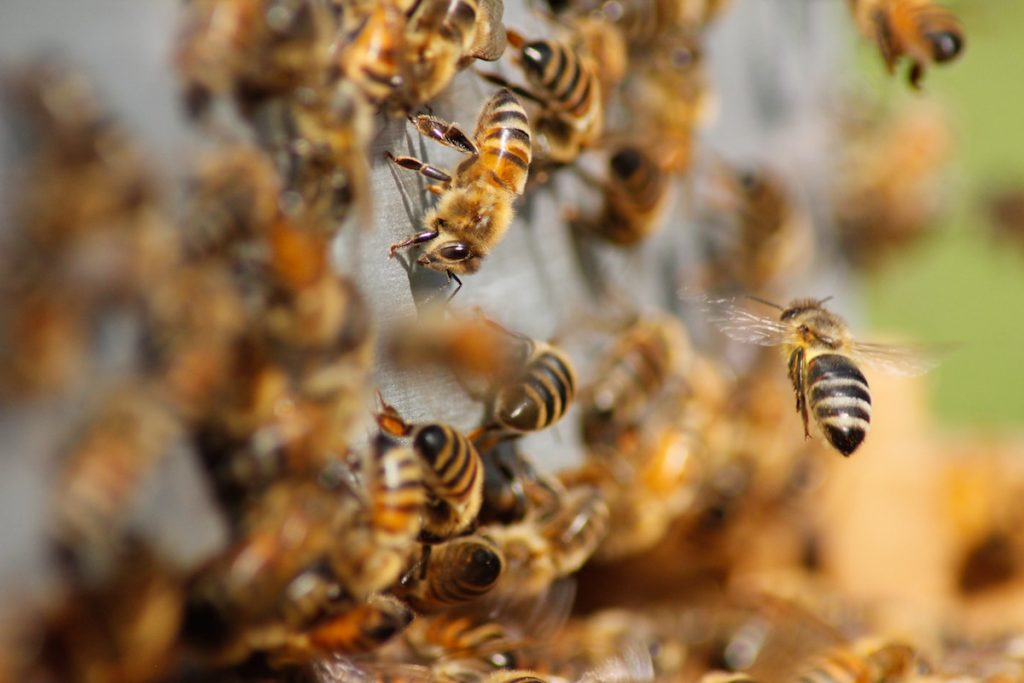The Biggest Threats to Honeybees

Just like humans, honeybees have specific basic needs that keep them alive and thriving. They need nearby sources of nectar, pollen and water. They need warm summer temperatures in which to forage. In the winter, honeybees need shelter to keep them warm and honey to sustain them. Without these basic necessities, honeybees won’t survive.
Bees are pretty resilient little creatures. After all, they have been in existence for millions of years! Even so, bee lovers around the world want to know what they can do to protect bee populations from decline. While some threats to honey bees can be prevented, others are not so easy to avoid.
If you care about honeybees like we do, then you want to know how you can do your part. Let’s explore some of the biggest threats to honeybees and learn what you can do to help – even if you are not a professional beekeeper!
What Can You Do to Protect Bees?
Even if you love bees, you probably don’t want a whole hive of them living in your home. Bees can be a nuisance and a danger, but for the most part, they just need to be handled with care by professionals. Do not attempt to remove the bees on your own – that is the easiest way to get stung! Some other bee tips include:
- Never swat at a beehive
- Never spray a beehive with a hose
- Do not use chemicals or pesticides on bees
- Always give bees their space
If you think you have a beehive or swarm on your property, the best thing to do is to call a professional live bee removal team to your home. They will humanely remove the bees, keeping them alive so they can be rehomed locally. By using humane bee removal methods, the bees can continue to live and pollinate as they are meant to do in nature.
The Biggest Threats to Bees
Unless you are a beekeeper, you probably won’t have to worry too much about the threats we’ll discuss below. But when it comes to bees, we always think that the more you know, the better!
Mites
Perhaps the biggest threat facing honeybees comes from the Varroa mite. This parasitic mite attaches to the bodies of the honeybees and larvae and feeds on the fat body, leaving the bees weakened and susceptible to viruses. The Varroa mite is thought to be partially responsible for Colony Collapse Disorder in honeybees.
Disease
Bees are susceptible to diseases, parasites and bacteria just like any other animal. And like us, bees are more likely to get sick when there are environmental factors that depress their immune systems and decrease their resistance. Many of the most prevalent bee diseases are contagious, making them even more dangerous for the colony.
Some of the most common diseases that can impact a colony include:
- American Foulbrood
- European Foulbrood
- Chalkbrood
- Sacbrood
- Nosema
Pesticides
Aside from physical harm to honeybees, humans can also cause chemical harm through the use of pesticides. Even if the chemicals are not meant for bees, pesticides often kill any insect in their path, even the ones we want to protect. Pesticides can drift across geographic areas, causing harm to bees and insects in neighboring communities. Plus, many pesticides last a long time in the environment, increasing the chances of harm to more bees.
Habitat Loss
Another concern for bees and other pollinators is habitat loss. Agriculture and development have compromised the natural habitats of many species. Large areas of concrete, paved roads and buildings allow for less space for flowers and fewer sufficient places for pollinators to build their nests.
As you can see, honeybees deal with significant threats that could put an entire colony at risk. Disease, mites, pesticides and habitat loss are just some of the considerable dangers that professional beekeepers and bee enthusiasts have to watch for when caring for bees.
Not an apiarist?
Don’t worry! You can still help honeybees. Do your part by using the most humane methods of bee removal the next time you have a bee infestation in your home or on your property. Now that you know what the world’s honeybees are up against, be an advocate for bees. Make sure your friends, family and neighbors know what they can do to remove their bees safely and humanely!
